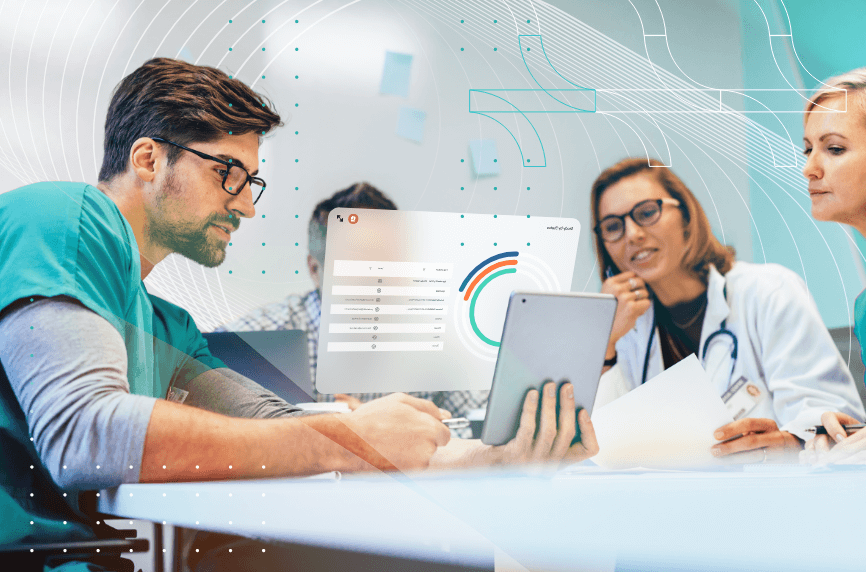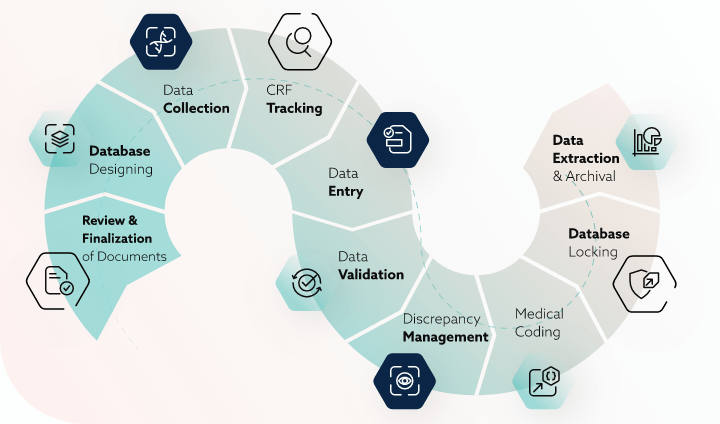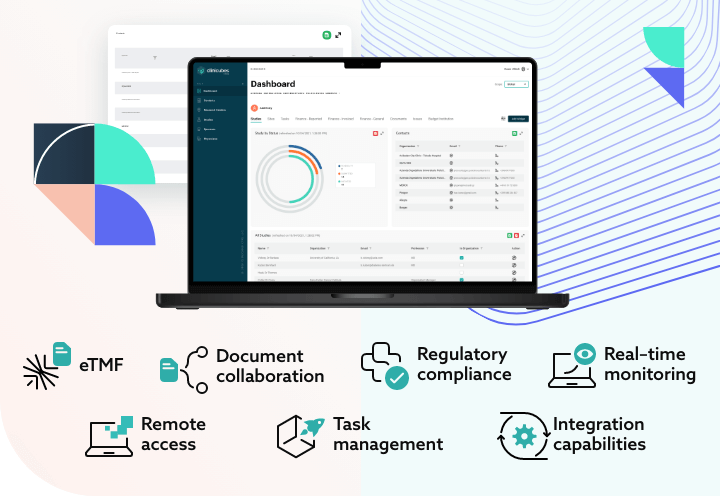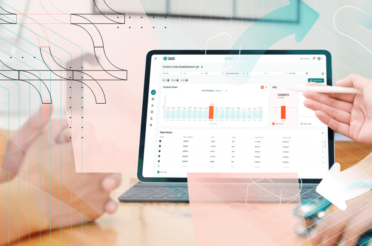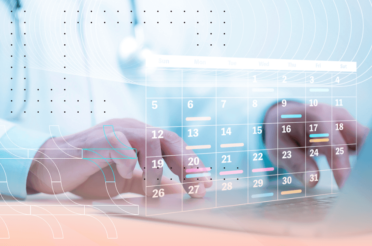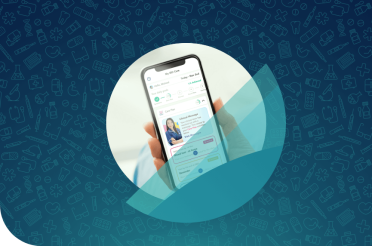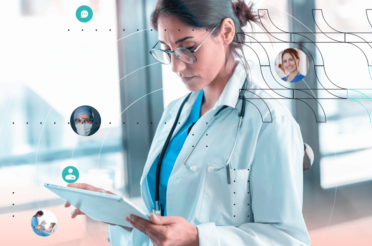Medical breakthroughs don’t just happen overnight – they’re the result of years of research and rigorous testing. At the heart of this process are the clinical trials. This testing process must utilize a strict scientific approach and an empathetic human one.
Here is the catch: for the clinical trials to be carried out at their best, we must ensure that all clinical research data they gather and work with is secured, validated, and well-managed. That’s where clinical trial data management software (CTDMS) comes in handy.
The use of CTDMS has been on the rise for the past couple of years, and it shows no signs of waning popularity. In this article, we will discuss its importance, how to make sure it is up to regulations, and all the benefits it brings to any research setting in the healthcare industry.
What is Clinical Trial Data Management Software (CTDMS)?
Clinical Trial Data Management Software (CTDMS) is a specialized tool designed to help researchers efficiently collect, store, and manage clinical trial data. It centralizes and standardizes data collection to improve accuracy, security, and organization. With a structured system in place, researchers can track and analyze information more effectively throughout a trial.
CTDMS captures different types of clinical data, including patient demographics, medical histories, and treatment outcomes. It keeps data consistent across multiple trial sites. By reducing errors, it improves data quality and strengthens collaboration among researchers, clinicians, and regulatory bodies. The software also includes security features that protect patient information and ensure compliance with regulatory standards.
As clinical research becomes more data-driven, CTDMS adoption continues to grow. Real-time monitoring, seamless data sharing, and strict compliance requirements have made these systems indispensable. By streamlining processes and enabling faster decision-making, CTDMS helps clinical studies stay on track and supports medical advancements.
Core Features of CTDMS
The following sections explore core features of modern clinical data management systems.
Data Collection and Standardization
CTDMS offers a centralized platform to collect and organize clinical trial data. It ensures consistency and accuracy across study sites by using structured formats that standardize data entry. This reduces variability and improves reliability.
The system captures critical data for clinical research, including:
- Patient demographics – Age, gender, ethnicity, and other baseline characteristics.
- Medical histories – Pre-existing conditions, past treatments, and relevant health records.
- Treatment outcomes – Adverse events, efficacy assessments, and long-term patient responses.
Standardized data collection allows researchers to analyze trends more effectively. With high-quality, well-structured information, they can make informed decisions that improve trial outcomes.
Remote Data Monitoring and AI Integration
Remote data monitoring plays a vital role in modern clinical trials. It reduces costs, improves efficiency, and ensures data integrity by enabling real-time oversight of trial sites. With CTDMS, researchers can track data remotely, minimizing the need for frequent on-site visits.
Integrating artificial intelligence (AI) further enhances the platform’s capabilities. AI automates data processing, detects anomalies, and streamlines analysis. By identifying inconsistencies and predicting potential risks, AI-driven analytics accelerate decision-making. This not only improves trial efficiency but also strengthens regulatory compliance.
Workflow Automation and Task Management
Automation simplifies trial operations and reduces manual errors. CTDMS handles routine tasks like data entry, protocol adherence checks, and document tracking, allowing researchers and coordinators to focus on critical aspects of the study.
Key workflow automation features include:
- Task assignment – Automatically assigns tasks to the right team members.
- Notifications and alerts – Keeps follow-ups on schedule and ensures deadlines are met.
- Protocol compliance tracking – Reduces deviations by enforcing adherence to trial protocols and regulatory requirements.
By streamlining workflow management, CTDMS enhances trial coordination and improves operational efficiency.
Quality Control and Data Validation
High data quality is critical to the success of clinical trials. CTDMS strengthens data integrity with real-time validation checks and automated cleaning processes that detect and correct errors as they occur.
Key quality control features include:
- Source data verification (SDV) – Confirms that trial data matches original source documents.
- Automated error detection – Identifies inconsistencies, missing values, and duplicate entries.
- Regulatory compliance – Ensures adherence to FDA 21 CFR Part 11, Good Clinical Practice (GCP), and other industry standards.
With robust data validation measures in place, clinical data management systems improve the reliability of trial results and ensure compliance with global regulations.
Real-Time Monitoring and Reporting
A clinical data management system delivers real-time insights into clinical trial progress through interactive dashboards and automated reporting tools. Researchers, sponsors, and regulatory bodies can track key metrics and make informed decisions based on up-to-date data.
Core monitoring and reporting capabilities include:
- Custom dashboards – Provide visual snapshots of trial status, enrollment rates, and data trends.
- Automated reporting – Generates compliance reports, safety summaries, and performance analytics.
- Decision-support tools – Help identify risks, refine protocols, and improve trial outcomes.
With real-time visibility into trial operations, CTDMS keeps studies on track, ensures regulatory compliance, and accelerates research progress.
Who Manages CTDMS? The Clinical Data Management Team
CDM activities begin at the early phases of a clinical trial, aligning with the development of the trial protocol. This protocol sets the foundation by defining the study’s goals and the methods used to achieve them.
Typically, responsibilities related to data management are distributed among the following people:
- Clinical data managers oversee the entire CDM process.
- Database programmers or designers handle the technical setup and maintenance of the database.
- Data entry associates are responsible for inputting the data collected into the system.
- Medical coders translate health-related data, such as diagnoses, procedures, and adverse events, into standardized industry codes.
- Quality control associates verify the accuracy and reliability of the data.
Now, let’s explore the stages of data management and the roles each team member plays in these phases.
Stages of Clinical Data Management
Clinical data management involves multiple steps, with each team member playing a specific role in different phases. Let’s break down the process and see how these experts ensure trials run smoothly.
Designing the Data Management Plan (DMP)
Key experts: clinical data manager and database designer
The first step is setting up a structured plan that guides data management throughout the trial. This outlines procedures, milestones, and key deliverables, ensuring every aspect of data handling is accounted for.
The data management plan (DMP) covers essential aspects such as:
- Data collection details;
- Formats;
- Security measures;
- Quality management procedures;
- Responsibility assignments;
- Compliance with regulations.
It provides a roadmap for working with information and handling potential risks.
Developing the Electronic Case Report Form (eCRF)
Key experts: data manager and database designer
This step involves designing a structured questionnaire for collecting participant data. The eCRF is aligned with trial protocols and industry standards.
Switching from paper-based forms to electronic ones reduces errors and speeds up data collection. These digital forms focus on capturing only the necessary details, eliminating unnecessary redundancy.
Building and Testing the Clinical Trial Database
Key experts: database designer and data manager
The trial database is structured to store information in an organized way (rows and columns), following the format of the case report forms. To optimize storage space, some questionnaire data can be coded into meaningful categories.
Before the database goes live, it is tested using dummy data in a secure, non-study environment to ensure everything works as expected.
Electronic Data Capture (EDC) and Integration
Key experts: Clinicians, data managers, data entry associates, medical coding specialists
This phase marks a shift from relying solely on medical sites for data collection.
Information now comes from various sources, including:
- Electronic health records (EHRs);
- Medical devices;
- Laboratory information systems;
- Patient-reported outcomes (PROs).
The transition to electronic forms enables faster and more accurate data entry.
Data Validation and Security Measures
Key experts: Data manager, database designer, quality control associate
To maintain accuracy and reliability, this stage involves several validation checks. The team ensures that data is consistent, legible, and aligned with source records.
It includes electronic edit checks, source data verification against original records, and data anonymization for compliance with regulations like HIPAA.
Database Lock and Data Archiving
Key experts: Data manager, database designer
In the final stage, the database is locked to prevent changes. The cleaned and validated data is then submitted for analysis, reporting, and publication of results.
Essential documents and trial supplies are archived for at least three years, allowing for post-trial monitoring, future evaluations, and additional research based on the collected data.
Choosing and Implementing a CTDMS: Best Practices
Selecting the right clinical trial management system (CTMS) is crucial for a smooth and successful trial.
To make an informed choice, consider these best practices when evaluating and adopting a system:
- Compatibility and integration – Ensure the system works with existing platforms like EHR and LIMS. Address integration challenges with technical support if needed.
- Vendor support – Choose a provider that offers quality training, clear documentation, and responsive customer service, especially during deployment and system updates.
- User feedback – Involve CROs, sponsors, and site staff in the selection process. Let them test free trials or demos to evaluate usability and functionality.
- Core feature prioritization – Start with essential functions to manage costs and complexity. Expand later with additional modules or integrations as trial needs evolve.
- eCRF validation – Conduct user acceptance testing (UAT) to confirm system functionality. Have clinical teams review eCRFs to ensure all critical fields are included.
- Database setup balance – Avoid rushing deployment to prevent costly errors. Carefully design and test the database to maintain data accuracy and integrity.
By following these steps, teams can implement a CTDMS that enhances efficiency, minimizes risks, and ensures high-quality data. With seamless integration into clinical systems, the right CTDMS helps prevent data discrepancies and keeps most clinical trials on track for success.
Regulatory Compliance and Data Security
Ensuring regulatory compliance and maintaining strong data security are critical aspects of managing clinical trial data effectively. Regulatory agencies, such as the Food and Drug Administration (FDA), European Medicines Agency (EMA), and others, set stringent guidelines to safeguard the confidentiality, accuracy, and privacy of clinical trial information.
Adhering to these regulations is key to obtaining approval and ensuring the credibility of trial results.
Various regulations, guidelines, and standards ensure accountability and quality in clinical data management:
- The Clinical Data Interchange Standards Consortium (CDISC) plays a crucial role by establishing data standards that align with international regulations, institutional standard operating procedures (SOPs), and state laws.
- The industry follows standard operating procedures and best practices, including CDISC’s Study Data Tabulation Model Implementation Guide for Human Clinical Trials (SDTMIG) and the Clinical Data Acquisition Standards Harmonization (CDASH), mandated by the FDA.
- Additionally, the Society for Clinical Data Management (SCDM) issues the Good Clinical Data Management Practices (GCDMP) guidelines, ensuring adherence to ethical and quality standards in clinical research.
- The National Accreditations Board of Hospitals Health (NABH) provides additional guidance, emphasizing pharmaceutical study auditing checklists.
Ultimately, complying with these standards ensures data integrity, reproducibility, and industry acceptance. Clinical data management associations provide valuable guidance on best practices, while clinical research associates play a key role in maintaining compliance throughout the trial.
Benefits of Clinical Trial Data Management Software
CTDMS offers a wide range of benefits for healthcare professionals and organizations. Some of these have been mentioned earlier, but this section provides a deeper look.
Enhanced Data Capture and Integration
CTDMS allows for the creation of customizable electronic case report forms (eCRF) tailored to the specific requirements of each trial. These customizable eCRFs facilitate the capture of relevant data, ensuring alignment with the unique aspects of the study.
The software also seamlessly integrates with EHRs, enabling the direct extraction of patient data. Furthermore, it supports integration with various external sources, including medical device sets and laboratory systems. This seamless connectivity reduces manual input, minimizes errors, and accelerates data capture.
CTDMS facilitates real-time data entry, minimizing delays and enhancing data accuracy. This capability is particularly valuable for capturing patient-reported outcomes (PROs) and clinical observations promptly, contributing to more timely and informed decision-making.
Ensuring compatibility with diverse data formats and standards is another important aspect. CTDMS promotes interoperability within the clinical research ecosystem. It allows for integration with other critical clinical research systems, fostering a seamless flow of such data.
The software implements automated edit checks to ensure data consistency and adherence to predefined criteria. Real-time validation during data entry helps reduce errors and maintain high data quality throughout the trial. CTDMS supports source data verification (SDV) as well by cross-referencing CRF entries with original source documents. This enhances the reliability of the data by confirming that electronic CRFs accurately represent the profiles of study participants.
CTDMS prioritizes data privacy with anonymization features and robust security measures throughout the data lifecycle. It aligns with clinical data standards like CDASH, ensuring data consistency and quality.
The system also supports secure data archiving. This facilitates post-trial monitoring, regulatory compliance, and future research. Easy retrieval of stored data enhances its value for ongoing analysis.
Centralized Storage and Real-Time Accessibility
CTDMS provides centralized data storage, streamlining data accessibility for all stakeholders involved in the clinical trial. This centralized approach enhances collaboration and ensures that authorized users can easily retrieve, share, and analyze data in real-time.
The system’s architecture promotes efficiency by eliminating data silos, contributing to a seamless and unified data and document management process. This centralized storage and accessibility play a pivotal role in optimizing overall trial operations and decision-making processes.
A key aspect of managing data in data management activities is cloud technology.
Cost Efficiency and Scalability
Cloud-based CTDMS offers seamless scalability and is adept at accommodating varying data volumes and trial complexities. Without the constraints of traditional infrastructure, cloud platforms adjust to varying data volumes and trial complexities.
Furthermore, cloud-based solutions enhance real-time access to trial data, fostering collaboration among researchers, sponsors, and even stakeholders across remote locations. This efficient collaboration promotes faster decision-making and ensures that all involved parties work with the most up-to-date information.
Additionally, cloud platforms with remote monitoring are particularly valuable for decentralized trials or scenarios where in-person oversight is challenging.
Cloud platforms often adhere to strict security standards, including encryption, access controls, and regular audits. This safeguards sensitive trial information while ensuring compliance with regulations. This commitment provides a secure environment for handling sensitive clinical trial information.
Cost efficiency is another advantage. The elimination of extensive hardware investments allows cloud-based CTDMS to operate on a flexible, pay-as-you-go basis. This cost-effective approach makes cloud-based CTDMS suitable for trials of various sizes.
Moreover, cloud solutions seamlessly integrate with other research tools, EHRs, and third-party applications, which further enhances interoperability, enabling smooth data exchange.
Workflow Automation and Task Management
CTDMS incorporates workflow automation to streamline complex processes in clinical trials.
Automation minimizes errors and accelerates processes. The software assigns tasks, tracks progress, and ensures accountability and transparency within the research team.
Another part of CTDMS is that it includes automated notification features to alert relevant stakeholders about upcoming tasks or changes in the trial workflow. This proactive communication enhances collaboration and keeps all team members informed in real time.
Workflow automation also incorporates decision support mechanisms that guide users through predefined processes and protocols. This feature assists in maintaining protocol compliance and adherence to regulatory requirements, as well as reducing the risk of errors in critical decision points.
Automation extends to data integration, enabling seamless connectivity with various data sources and eliminating manual data entry redundancies. This integration enhances data accuracy, consistency, and overall quality throughout the trial.
Furthermore, CTDMS, along with workflow automation, maintains a detailed audit trail. This means that every action taken within the system is recorded. This feature ensures compliance with regulatory standards by providing a comprehensive record of data management processes.
Quality Control and Data Cleaning
Quality Control (QC) and data cleaning tools are integral components of CTDMS. CTDMS employs automated data validation checks, following predefined rules to flag errors and others.
Edit checks range from basic range validations to complex logic tests, reinforcing data integrity.
The software features a query management system, streamlining communication between data managers and site personnel for prompt resolution of data-related queries. Sophisticated algorithms automate data-cleaning processes, addressing common issues like missing data and outliers. User-driven data reviews complement automated processes by a comprehensive approach to identifying and rectifying discrepancies.
The real-time monitoring of data quality enables quick responses to emerging concerns. These processes help define data lock criteria, ensuring that datasets are thoroughly reviewed and cleaned before statistical analysis.
These tools are essential for upholding data quality standards throughout the trial and meeting regulatory expectations and industry best practices.
Real-time Monitoring and Reporting
Real-time insights are at the heart of effective data management. But what does that really mean for clinical trials? Real-time monitoring and reporting are critical features of CTDMS because they provide stakeholders with immediate insights into trial progress and data quality. This functionality enables continuous oversight, enhancing decision-making and ensuring the overall data validation process in clinical trials.
Real-time monitoring allows stakeholders, including sponsors, investigators, and clinical trial managers, to access live data streams and metrics, facilitating the early detection of issues. This proactive approach enables timely intervention, addressing potential challenges before they escalate. It enhances trial efficiency, reducing the likelihood of errors and streamlining the overall data management process.
Reporting tools within CTDMS offer customizable dashboards and detailed analytics, making complex data easy to interpret. These tools empower stakeholders to track key performance indicators, assess data quality, and make informed decisions.
Regular, automated reports in clinical electronic systems also contribute to efficient communication within the trial team, ensuring everyone has access to the most up-to-date information.
The integration of real-time monitoring and reporting capabilities supports data-driven decision-making throughout the trial lifecycle. Stakeholders can identify trends, evaluate protocol adherence, and assess participant safety promptly.
Additionally, this functionality aids in meeting regulatory requirements by providing transparent and traceable documentation of trial activities.
Improved Collaboration and Communication
Clinical trials involve many moving parts, so how do teams stay in sync? CTDMS makes it effortless! Collaboration and communication features in CTDMS enhance teamwork, information sharing, and overall trial efficiency.
The software promotes seamless communication through centralized platforms, including messaging systems, discussion forums, and notification features for real-time updates. Centralized document repositories ensure access to the latest versions of critical documents, reducing errors and miscommunication.
These features extend to controlled data sharing and access permissions, safeguarding sensitive information while fostering collaboration among different functional groups. Collaborative data review and validation processes are streamlined, accelerating overall data management.
Case Study: Clinicubes by BGO Software
Running a clinical trial or managing a healthcare facility comes with countless moving parts. Clinicubes by BGO Software is a comprehensive clinic management system designed to meet the diverse needs of clinical operations in one intuitive platform.
Tailored for the healthcare industry, this system is particularly beneficial for mid-market and small-business segments, serving the research and hospital & healthcare sectors.
Clinicubes helps clinical research coordinators stay on top of clinic management, streamline operations, and maintain compliance with industry standards – all without the usual administrative headaches.
The software integrates seamlessly with other clinical tools, offering a unified environment for efficient clinic operations.
What makes Clinicubes stand out? Its key features are:
- eTMF (Electronic Trial Master File): Clinicubes CTMS provides an electronic Trial Master File. It allows the creation, organization, and management of essential trial documents. This includes regulatory documents, site-specific materials, and other trial-related documentation, promoting a paperless and centralized approach.
- Document collaboration: Need multiple team members to review and approve documents? Clinicubes makes it easy to share, edit, and finalize files in one secure location, ensuring everyone stays on the same page.
- Regulatory compliance: Clinicubes CTMS is designed to support regulatory compliance throughout the clinical trial lifecycle. It assists users in adhering to Good Clinical Practice (GCP) guidelines and other regulatory standards, reducing the risk of compliance issues.
- Real-time monitoring: The software system enables real-time monitoring of trial progress and document status. This feature provides valuable insights for sponsors, monitors, and investigators, offering a clear view of the trial’s current state and any pending actions.
- Remote access: Whether your team is on-site, working from home, or spread across different locations, Clinicubes allows secure access to trial documents from anywhere.
- Task management: Clinicubes CTMS includes features for effective task management, allowing users to track and manage various trial-related tasks. This contributes to better organization and ensures the timely completion of critical activities.
- Integration capabilities: Clinicubes offers integration capabilities with other clinical trial management tools and systems. This promotes a seamless and interoperable environment, enhancing the overall efficiency of clinical trial management.
At its core, Clinicubes is more than just software – it’s a game-changer for clinical research. With features like cloud-based storage, automation, and real-time insights, it empowers research teams to conduct faster, more efficient, and more precise trials, ultimately accelerating medical discoveries.
With the expertise of BGO Software, developing and implementing clinical trial management software doesn’t have to be a daunting process. BGO brings the knowledge and support needed to transform research operations with ease.
Conclusion
CTDMS has transformed clinical research by making data management more efficient, accurate, and compliant with regulations. By centralizing and standardizing trial data, it helps researchers, clinicians, and regulatory bodies maintain consistency and security across studies.
With automation, AI-driven analytics, and real-time monitoring, CTDMS speeds up processes and reduces errors. Research sites can generate statistically sound data while ensuring seamless integration with existing computer systems. Professional services also play a key role, guiding teams through implementation and compliance challenges.
As clinical trials grow more complex, the need for reliable data management will only increase. CTDMS will continue to support groundbreaking research, improve collaboration, and drive advancements in patient care.









